|
Sails Of Glory Scenario
| ||||||||||||||
|
Players: 4, divided evenly into two teams. Gaming Surface: Length: 90cm, width: 60cm or one game mat. Place an island and lighthouse as shown on the map. The easterly three-quarters of the map is the Baie de Phare. It has a rocky coastline and dangerous within the width of a ruler (as marked in yellow on the map). To invasion barges are anchored as shown on the map facing into the wind (two ships-of-the-line can be used to represent these). French players: Two frigates in line astern entering at the south-west corner (as marked on the map). British players: Two frigates in line astern entering at the north-west corner (as marked on the map). Additional Rules Needed: Special rules below are used. The water is shallow enough to anchor. |
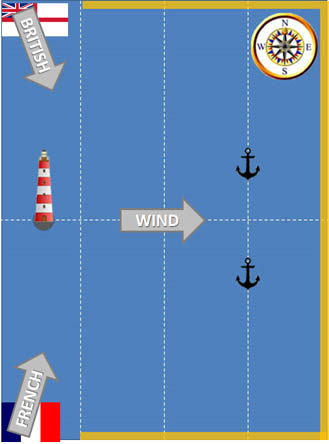
|
Special Rules
Communications
Line Astern
Invasion Barges
Drifting
Anchoring using the bower anchor
Weighing Anchor and getting under way
|
|
British Frigate OrdersBy the Commissioners for executing the Office of the Lord High Admiral of Great Britain and Ireland &c and of all His Majesty's Plantations &c. To XXXXXX , Captain of His Majesty’s Frigate XXXXXX. Willing and requiring you forthwith take upon you the Charge to proceed with all possible speed together with His Majesty’s Frigate XXXXXX to Capture or Destroy the two invasion barges anchored behind the lighthouse in Baie de Phare on the on the west coast of Normandy and there reported by a fishing boat. Hereof nor you nor any of you may fail as you will answer the contrary at your peril. And for so doing this shall be your Warrant. Given under our hands and the Seal of the Office Admiralty this Twenty-fifth day of May 1804, in the forty-fourth Year of His Majesty's Reign. By Command of their Lordships Evan Nepean, Secty Sketch map of Pear Bay drawn by the mate of the fishing boat. They should still be in this position because the westerly winds make it hard for them to beat out of the bay. The quickest route means that you will arrive from the north. |
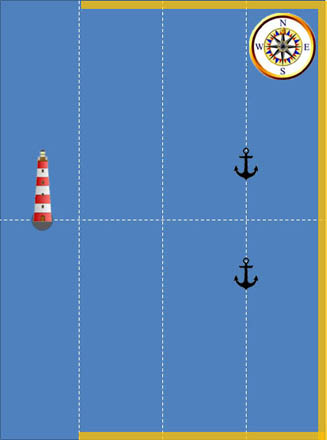
|
French Frigate OrdersTo Capitaine de frigate XXXXXX of the XXXXXX. Two invasion barges, on their way up the channel to join the National Flotilla located in the port of Flushing in the Batavian Republic, were damaged in a gale and took refuge in Baie de Phare on the west coast of Normandie where they are anchored behind the lighthouse. The current westerly winds making their location unsafe, you are ordered together with Capitaine de frigate XXXXXX of the XXXXXX to proceed with utmost dispatch to give them all necessary help so that they can continue their journey with safety. By Order of Amiral Étienne Eustache Bruix, conseiller d'État After anchoring the mate of one of the invasion barges took the jolly boat. The boat was swamped but he made it ashore and upon arriving at naval headquarters made the following sketch map of Baie de Phare showing the position of the barges. The quickest route means that you will arrive from the south. |

|
After Action Report: The Battle of Pear Bay
Let play commence...
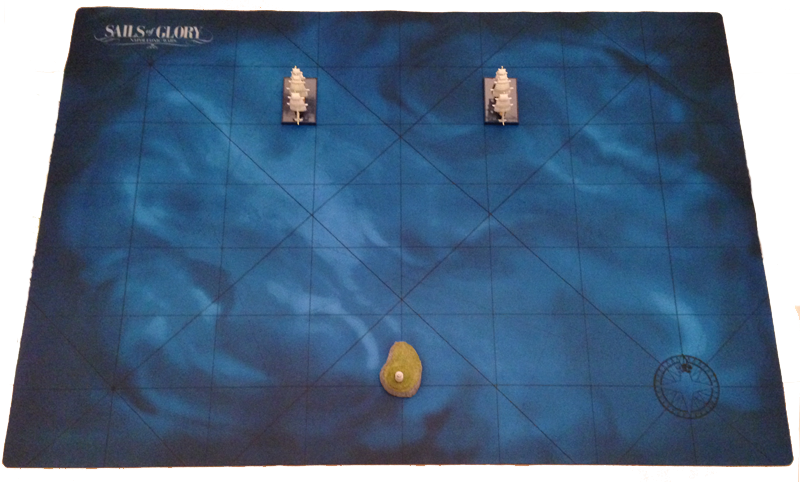
The British decided to keep the wind gauge and sailed as near as possible to the lighthouse. The French decided to give up the wind gauge and fall off to protect the invasion barges...
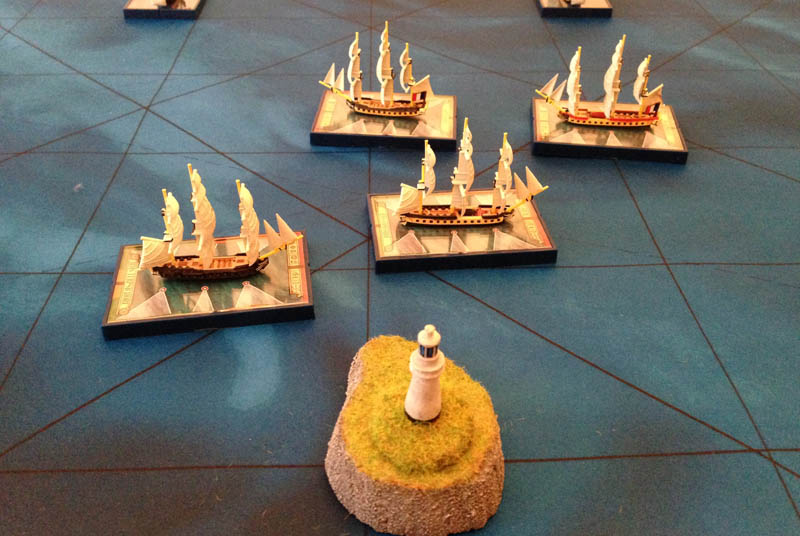
The fight commenced with some very lucky shooting from the British. At the same time the French were carrying too much sail and overshot the invasion barges they were trying to protect...
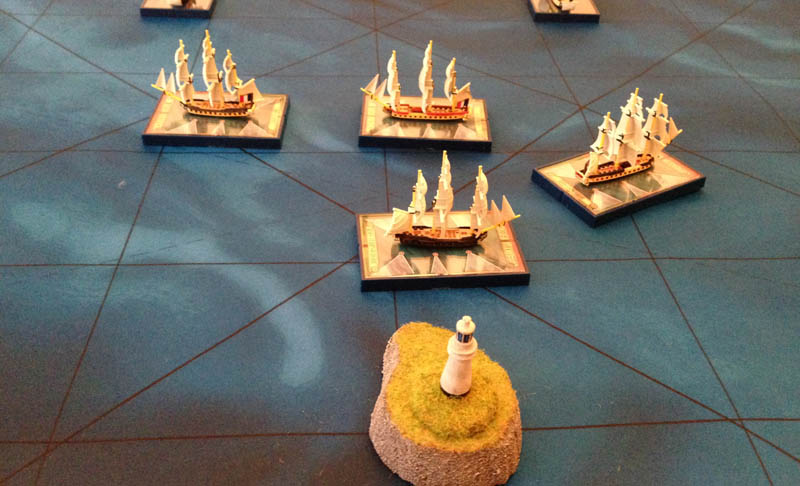
The lead French frigate lost her foremast and was holed below the waterline and leaking while the second frigate now bore the brunt of the British attack and caught fire.
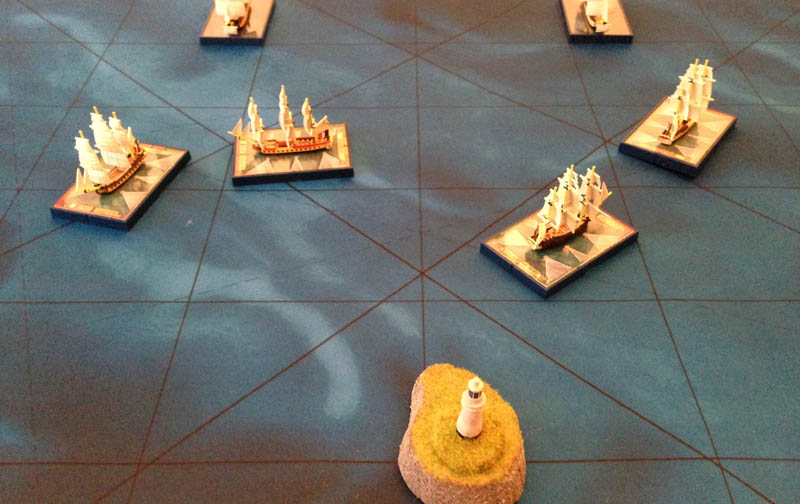
The lead French frigate tried to turn to as to protect the invasion barges, but without its foremast it missed stays and its consort collided.
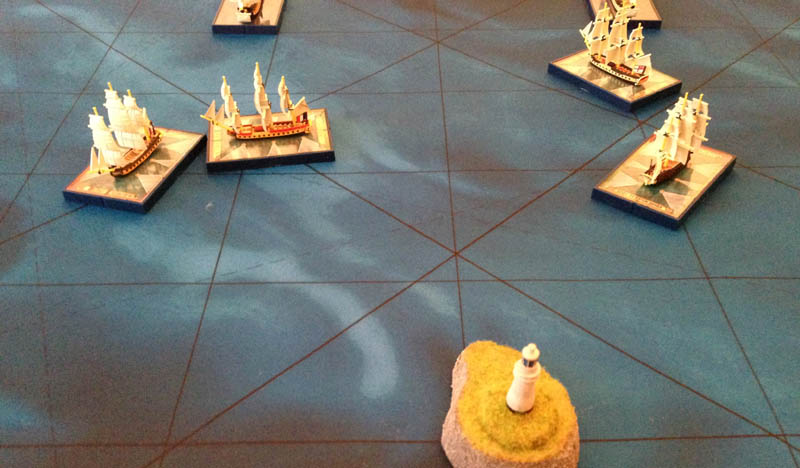
Badly damaged and still smoking, the French frigates crept away with their tails between their legs leaving the invasion barges at the mercy of the British Navy.
